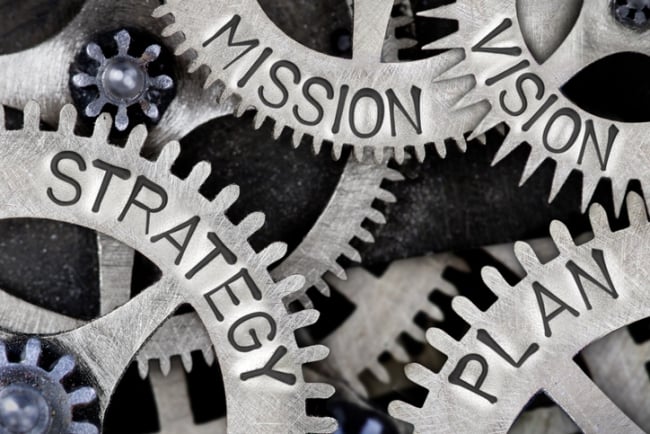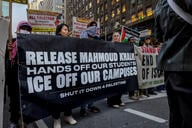You have /5 articles left.
Sign up for a free account or log in.

The author explores what it would mean for college leaders to approach overall institutional strategy in the same way they did coexistence with COVID.
EtiAmmos/iStock/Getty Images Plus
Up until very recently, every senior leadership team meeting at Augustana College—even those that had been called to address a special issue—started with a COVID-19 update. The president would turn to our COVID czar, who is the dean of student life, for an update, asking, “How are we coexisting with COVID?”
The questions were often the same. How many cases? How is the testing protocol going? What’s our quarantine housing capacity? How are the students doing (mentally, academically, with policy compliance)? How is the workforce? Can we keep people working and fully engaged? What are we hearing from public health officials, the Centers for Disease Control and Prevention, and the governor? How are other colleges handling this or that, and also the area high schools? Are we acting consistently with our values?
We wondered whether the college should purchase higher-quality masks for the entire community, or whether we needed a different public information campaign on campus. We spent an unbelievable amount of time thinking about communication efforts—posters, social media, live briefings, weekly email updates and whatnot.
This had been the pattern and rhythm for more than two years. It’s been nonstop. It’s been exhausting. But it’s never been boring. Most importantly, this laser-sharp focus enabled our institution to effectively coexist with COVID and emerge stronger for the future.
For many college leaders, the work we’ve done has been nothing short of remarkable and probably deserves more study. This brings me to some important questions:
- Should colleges approach overall institutional strategy in the same way we did coexistence with COVID?
- What if every leadership team meeting started with an update on how well we are implementing our strategic plan, including a strategic focus on how our students and workforce are doing?
- What if we actively practiced environmental scanning about what competitors are doing?
- What if we were in full listening mode about what accreditors were focused on and what the community’s needs are?
- What if we communicated regularly about our strategy implementation and everybody brought the same curiosity they had about COVID-19?
Some are probably thinking, “Wait, COVID is a health and safety issue. It’s about community survival.” True. Coexistence with COVID has been an existential matter, and many of us managed very well. In fact, many of us would get very high marks from our stakeholders. We were all—board members, faculty members, staff, students, alumni and parents—aligned in our purpose to survive as an academic community and as an institution. Everyone wanted our efforts to work.
We could approach a post-COVID world in the same way. We can make institutional strategy the centerpiece and touchstone for what we do operationally for the health of our institutions. Here’s how:
- Begin everything with strategy. Everyone knew what we needed to do to keep our community safe during the depths of the pandemic, and we had a straightforward set of questions. Institutional strategy should be equally clear. Campus leaders should be equipped to ask a similar set of questions about strategy at the outset of any meeting or stakeholder conversation.
- Empower a strategy czar. When everyone is responsible, no one is accountable. Just like with COVID, colleges need an individual to whom everyone can turn to understand how well the organization is doing in implementing its strategy. While there was shared responsibility in making it all happen during COVID, we always knew we could turn to Dean of Student Life Wes Brooks to get the latest. There should be the same level of comfort in a chief strategy officer as we emerge from COVID.
- Look outside your organization to the values and needs of the broader community. One of the most fascinating things about COVID is that the so-called ivory tower was not impenetrable. We needed guidance from public health officials and public policy makers. Even when it was murky or counterintuitive, we valued this outside perspective, paid attention to the needs of our community and tried to be good partners. Emerging from the pandemic, we need to be much more in tune with what our community needs from us and how they expect us to prepare our graduates.
- Regularly ask, how are our students doing, not just academically but also mentally and emotionally? I am so proud of how often we focused our work on keeping our students safe and engaged. The entire campus community rallied around what our students needed. Honestly, we should focus more on this question all the time, and it should guide our strategy.
- Likewise, regularly ask, how is our workforce doing? During the pandemic we worried more about our workforce than ever before. Let’s not stop now. We need to think more about the workforce, and those conversations should be central.
- Find the resources to spend with intention for impact. We found resources for more financial aid, an unheard-of amount of Plexiglas, the good face masks, face guards, more community-guidance posters than we’ve printed in the existence of the college and all sorts of other things. Yes, federal money has helped with some of this. But we led with the will to invest, rather than the hand-wringing that typically happens when spending strategically. As we emerge from COVID, we need to follow the practice of smart and strategic spending, as if the college’s survival depends upon it.
These are the things that equipped colleges to live with COVID. Simply put, we were relentlessly focused on managing a complex issue with multiple impacts in an ever-changing environment, and we did it. Institutional strategy and sustainability are no different. If colleges and universities are to thrive in the years ahead, it will be because they’ll approach institutional strategy the same way they did their coexistence with COVID.
I can’t wait to begin every meeting of our leadership team with the question “How are we doing with advancing our college’s strategic plan?”








